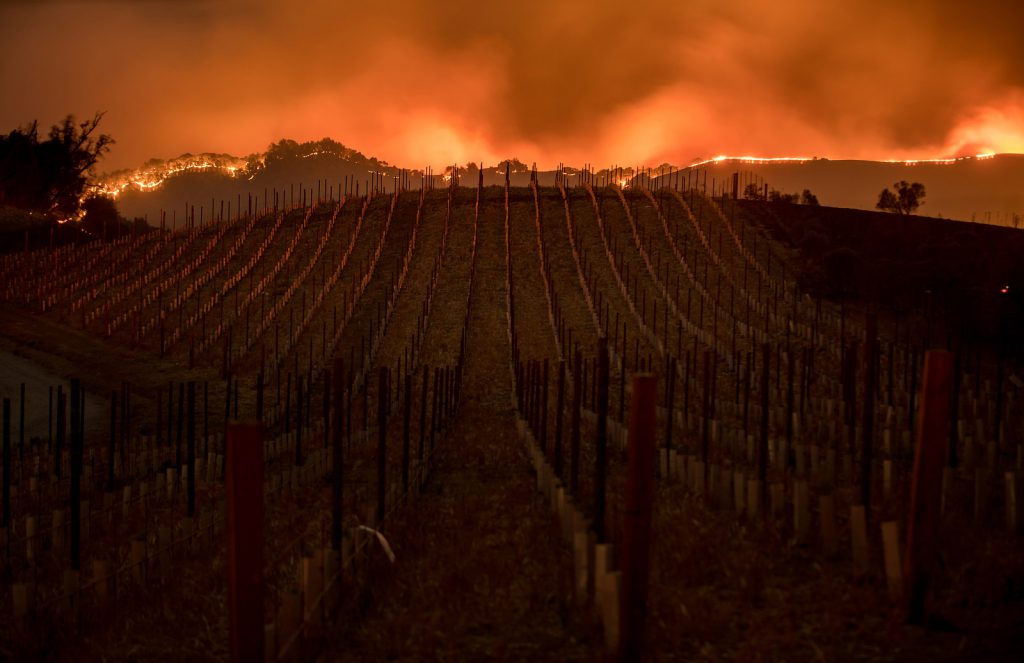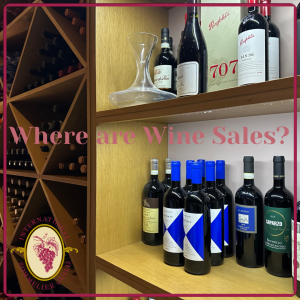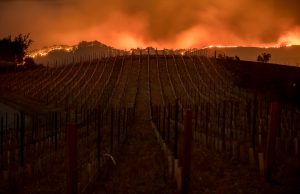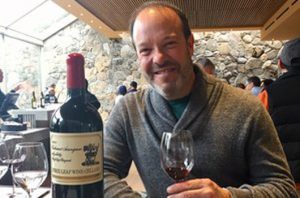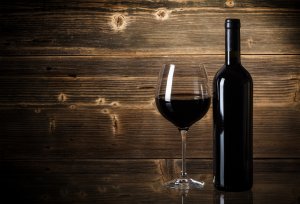California’s Wine Conundrum: How Fires, Droughts, and Other Elements are Affecting Winemakers
Some have said that stressed vines turn out the best wines. Smoky overtones indeed are a pleasure to indulge with that complement grilled meats or smoked flavors. However, there is, of course, too much of a good thing. That is where California’s wildfire predicament comes into play.
As more vines are exposed to destructive wildfires that stress them along with prolonged drought periods, it stands to reason we should be collectively concerned about California’s wine country. So naturally, this makes winemakers in this region, along with everyone else in the world, from vintners to consumers, a bit nervous about the future.
Among the concerns, climate change effects may be making wine regions too warm for the varietals they once were famed for to grow well. Cabernet Sauvignon and Chardonnay both come to mind as the lengthy droughts continue to decrease harvest yields, further exacerbating those dry conditions that fuel massive wildfires. The fires destroy everything in their path, and even for those out of harm’s way, prolonged smoke exposure damages the very fruits of the vintner’s labors.
Smoke Taint Defined
In wood, there is a compound known as lignin, which gives trees their rigidity and strength. However, when this burns, it releases compounds into the air, which are volatile phenols. These can travel great distances where the compounds either degrade or settle onto the ground.
As such, it makes it difficult to determine the impact they have. Many winemakers wonder if they are a certain distance from the fire if they are safe. The distance has less to do with it, though. Some vineyards that were further away had a more significant impact than the ones that were closer.
Therefore, the intensity of the smoke and the length of exposure make the biggest contributions to the grapes. However, the visual presence of smoke is not enough. Neither is the measure of the air quality index as far as it can go with the impact on wine grapes. That is because these impactful compounds are not capable of being measured by particulate counters. After all, they are so small. This adds to the dilemma for winemakers and the wine industry as a whole.
Smoke, Climate Change, and Other Influences
What will winemakers do with these grapes? The whole wine industry stands to suffer from the effects of climate change in viticulture. As such, researchers and winemakers alike are coming together to discover new ways that grape growers can adapt to the increase in temperatures, such as how to deal with smoke-tainted grapes and the chance of rootstocks that can tolerate drought better.
Wildfires have become a yearly occurrence in California. If the grapes are continually exposed to smoke, they take on unwanted flavors. Those flavors then present themselves in the finished product, which has the potential to ruin all that hard work in creating each vintage.
However, the way smoke affects the grapes is not always so easy to discover. It is not detectible by sight, smell, or even flavor if you should pluck the grapes from the vine and sample them. Smoke in the air does not equate to tainted grapes. Those variables become much more complex, which is why chemical analysis can help, though only if it is applied quickly.
As such, working around this has slowed down the wine industry. While waiting for results, many contracts were canceled without proof that the smoke did not ruin the vintages. In addition, the demand for this analysis continues to exceed the supply, making this an even larger-scale problem.
While it is undoubtedly true that winemakers will add subtle smoky hints to make wines unfold in a more complex way, the flavors that come from wildfire smoke render them undrinkable. Wines that are tainted by smoke have discordant aromas that smell like chemical agents and have the flavor of an ashtray that has not been cleaned out since the 1980s.
Since climate change increases the instances of drought and wildfire events in California, these are the biggest threats to the state’s treasured vineyards. Along with the challenges the pandemic created, it is a worrisome problem. Temperatures around the world have steadily risen, which makes the prevalence of drought and heatwave far more common. In addition, the fires in 2020 burned through over 4 million acres of land, the largest on record.
On the plus side, vineyards are a bit resistant to flames. They create fire breaks which can help halt the fire. While that is good, the smoke is still in the air, lending that unpleasant aroma and taste to the varietals.
The Plan for Winemakers
Research continues to abound for smoke taint and its impacts. They are looking at ways to protect the grapes from harmful compounds that come from burning woods. Sensors are another option that may give a better estimate of the risk of smoke taint. Doing so would also aid the labs because grapes would only be tested in a high-risk area.
However, wine professionals need to know that vintages from 2020 are not ruined. If it is out there and bottled, it will be up to the standards you hold high. No winemaker would ever let a bottle reach the shelves without ensuring it upholds that flavor you seek, for you’d surely never rebuy it.
On the horizon, growers are working with researchers to discover rootstocks and clone combinations to help resist drought conditions. Farming practices that can mitigate warmer weather effects are also being sought. They are also considering varietals that thrive at the same latitudes as southern Italy and Greece.
Another option? Shade films can serve to filter out UV light. This would allow the grapes to grow outdoors as usual but stay cooler and expand through that growing season. It is a bit like a greenhouse, except it is more open, allowing the grapes to grow outdoors while staying cooler. It can also expand the growing season, another benefit that could potentially save the California wine industry.
Cabernet Sauvignon on Focus
There is no doubt that California’s most signature grape varietal grown in Napa is Cabernet Sauvignon. It makes up more than half of the grapes grown in the Napa Valley and requires specific conditions to thrive. For example, Cabernet Sauvignon grapes need warmth to ripen. However, too much heat makes the flavors fall flat and retain an unpleasantly boozy taste. There is also the conundrum about lack of water supply which can lower crop yields.
Research teams are working together to find the hardiest rootstocks for this varietal. They are doing so by identifying the biomarkers for water stress and overexposure to heat. Currently, they are evaluating these biomarkers to find the most resilient among them to carry on with the Cabernet Sauvignon production.
It is a wise way to approach a growing problem that seems to have no end. Each year brings another massive wildfire outbreak. Turning a blind eye to it will not make it disappear, though the good news is that winemakers and researchers are intent on winning.
The researchers are busy looking at the individual characteristics of the root cells. This is what helps roots draw in water, even from dry soil. When those genes have been identified, they can look for them across large populations and breed these specific grapes with these genes from Cabernet Sauvignon grapes. It can be something used to help all varietals thrive in any condition in the future too.
Turning to the plants themselves to solve the problems is about capturing the survival of the fittest. Finding the traits that can tolerate stress better than others will help yield hardier vines that thrive during any condition.
How to Buy 2020 Vintages
Naturally, consumers are a bit wary when it comes to buying California wines produced in 2020. However, if you would like to try them, you should. Winemakers have pulled out all the stops to ensure that nothing subpar would be included in their bottles.
In fact, you may be uncorking some of the best wines of all due to the stringent planning and work that has gone into each bottle. Beyond the 2021 vintages and onward, winemakers will continue to pursue the best practices and how to overcome these obstacles thrown forth by the wildfires, climate changes, and how that affects the soil and grapes.
If you have a favorite California winery, you should continue to buy wine as you normally would. This will help keep the California wine industry going, and if you keep a 2020 vintage in your wine cellar, it may just have even more exciting flavors to open up once you pop that cork.

